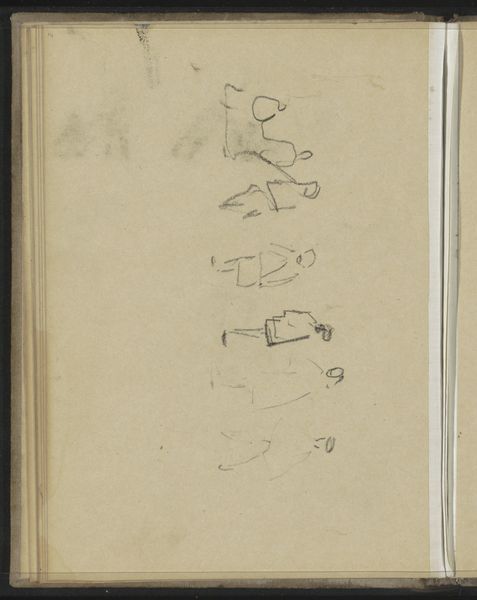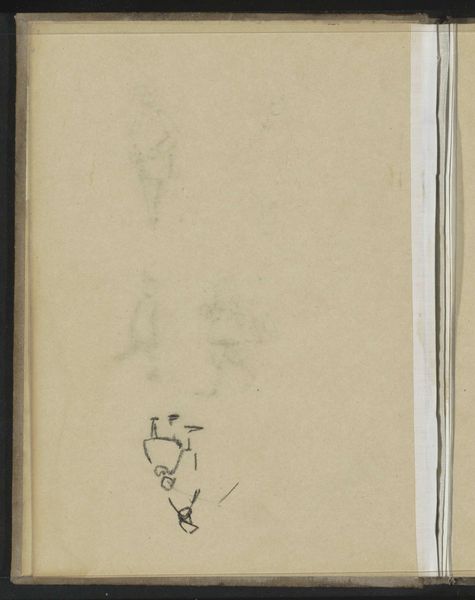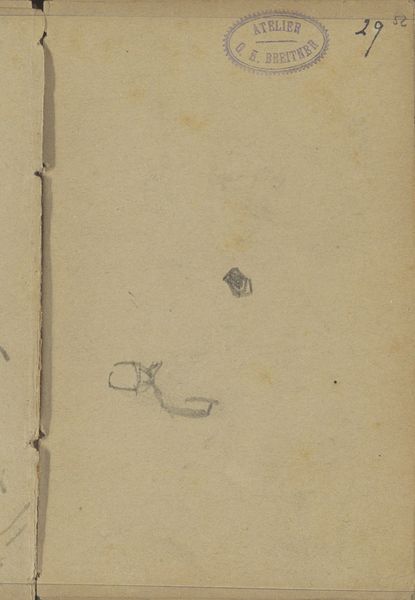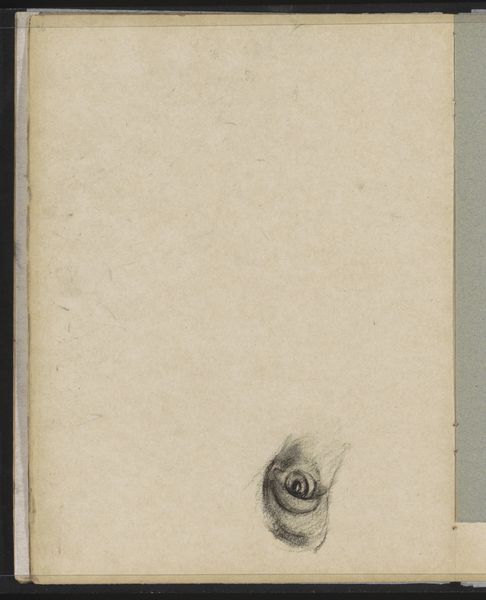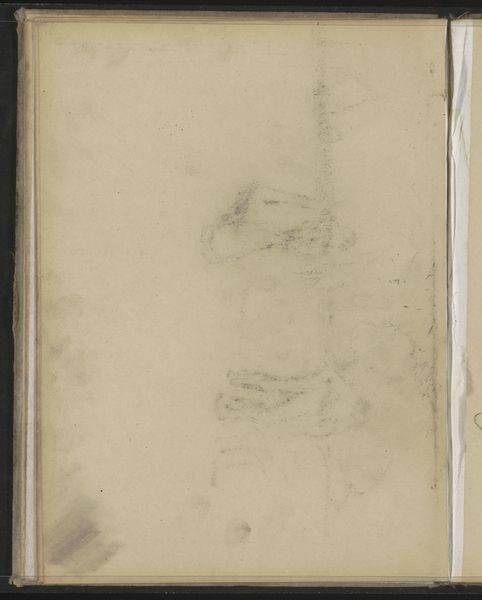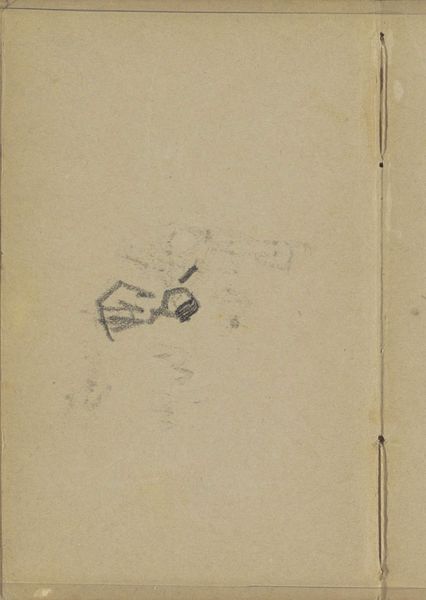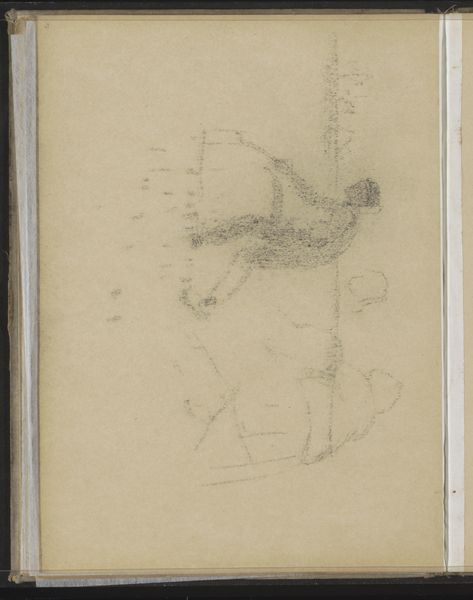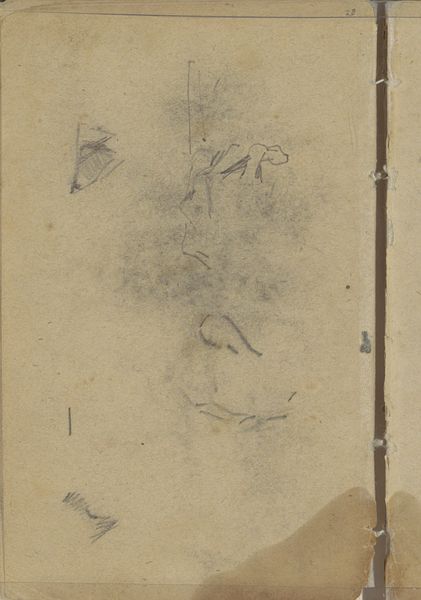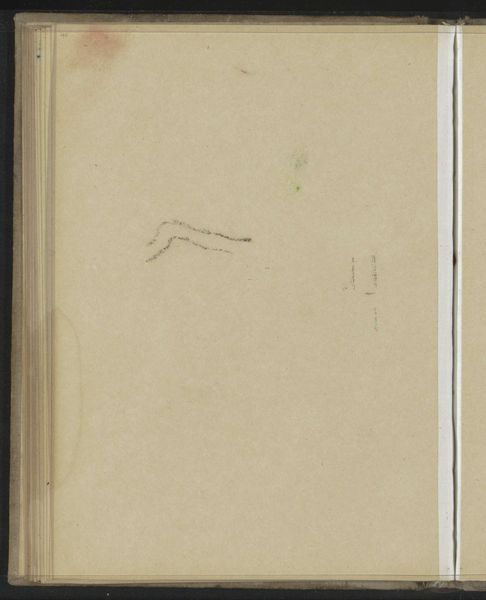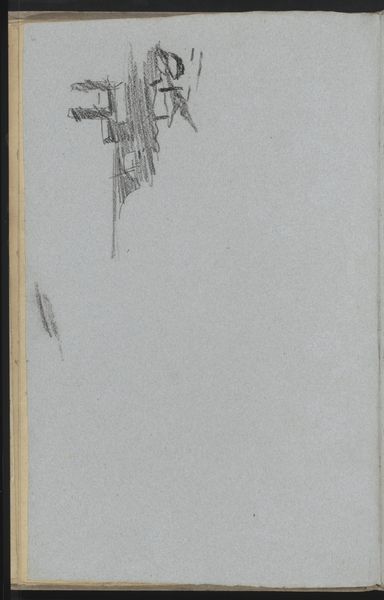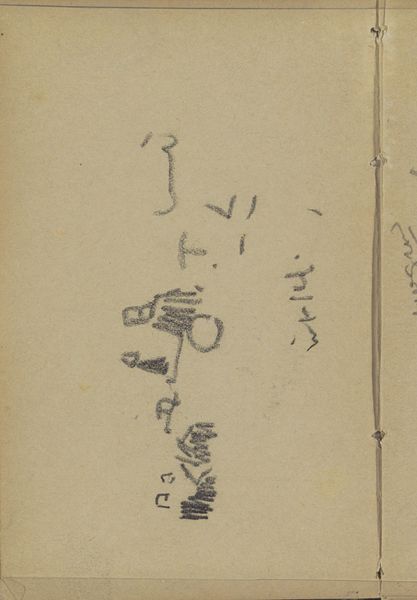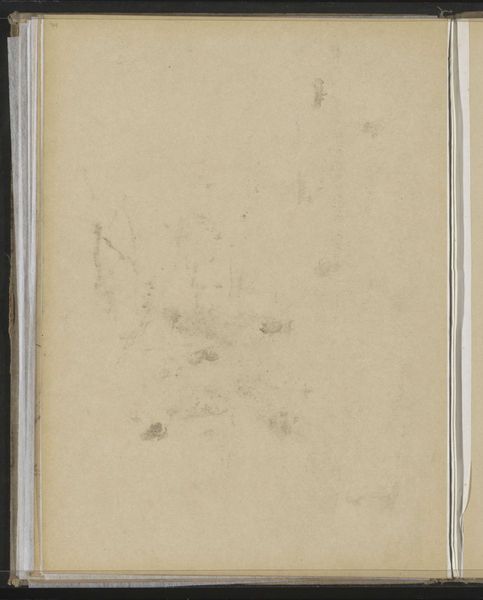
Copyright: Rijks Museum: Open Domain
Curator: We're looking at Willem Witsen's "Spelende kinderen," or "Children Playing," created circa 1892-1897, a quick sketch now held at the Rijksmuseum. Editor: There's a definite immediacy here; it’s like catching a fleeting glimpse of a group of children from above, rendered in minimal pencil strokes on a warm, toned paper. The material simplicity gives it intimacy. Curator: It reminds me of similar fleeting depictions of childhood in earlier Dutch Golden Age painting, but without any moralizing content; pure movement. What sort of symbolism do you glean from its informal quality? Editor: I'm less drawn to formal symbolism here. Instead, the choice of such readily available and economic materials, like pencil and paper suggests how art making became accessible. Was this part of his study? Or done for a commercial project? Curator: It's known he was committed to capturing everyday life; there is beauty even in the common activity of play. This connects to ideas that even everyday activity participates in a larger pattern. The children playing form a loose circle or cluster, perhaps implying unity, yet are also individuals in the scene. Editor: Interesting interpretation. It might also suggest an element of production: How available were materials? What class were the children? Where does children's work fit in to Dutch society at this period? We forget how much cheaper images have become in contemporary society. Curator: Good point, perhaps it's useful to also see its relationship to the Symbolist movement of the late 19th century? Many artists sought spiritual meaning in observable life around them. Here childhood play offers simple innocence. Editor: Well, it definitely gives us a different perspective on art historical materialism—thinking about those small acts of labor that become visible in his sketched composition on readily-sourced material. Curator: Indeed, this dialogue enriches my viewing of the piece! Considering that period between realism and early abstraction, with the focus not on polished technique but on lived experience, this ordinary material gives an uncommon insight into Witsen's time.
Comments
No comments
Be the first to comment and join the conversation on the ultimate creative platform.
